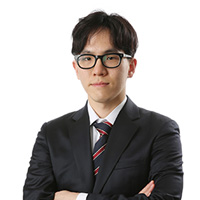
Nuri, South Korea’s first domestically made satellite launch vehicle, lifted off from the Naro Space Center in Goheung, South Jeolla Province, at 5 p.m. Thursday.
The launch vehicle, weighing 200 metric tons, is now on its maiden flight to put a 1.5-ton dummy into low orbit some 600-800 kilometers above the Earth.
Korea Aerospace Research Institute says it will know if the launch is a success around 30 minutes after liftoff.
Designed and built entirely using Korean technology and equipment, the Nuri carries with its dummy payload South Korea’s ambitions to join the global space race.
If successful, the country will become the world’s seventh country to have developed independent capabilities to launch a satellite weighing over 1 ton into orbit from its own soil.
The chance of success, however, is not considered high. KARI has previously said that only about 30 percent of newly built spacecraft succeed on their first attempt.
The Nuri’s launch was delayed by one hour due to technical reasons.
The authorities have cleared the area surrounding the Naro Space Center in case of a failure. Starting in the morning, everywhere within 3 kilometers of the launch pad was evacuated. The government also restricted flights and sailing in the area near the rocket’s trajectory. No on-site spectators have been allowed.
Thursday’s launch, successful or not, will be the first of a series of Nuri launches, as KARI already has plans for upgrades for future models.
Additional launches are scheduled in the coming years. For the most immediate one on May 19, the Nuri will carry actual satellites.
The Nuri is the product of the country’s investment over the last 11 years and seven months.
In 2009, South Korea launched the country’s first orbital rocket Naro, also known as KSLV-I. In 2013, after two failed launches, the country succeeded, making it the world’s 11th country to put a satellite into orbit.
South Korea has invested some 2 trillion won to build a satellite launch vehicle on its own.
For the Nuri project, the country has made some 370,000 parts and completed 184 engine tests, with the involvement of 300 local companies.





![[AtoZ of Korean mind] Ever noticed some Koreans talk to themselves?](http://res.heraldm.com/phpwas/restmb_idxmake.php?idx=644&simg=/content/image/2024/11/03/20241103050186_0.jpg&u=20241103174756)



![[Breaking] North Korea fires short-range ballistic missiles: JCS](http://res.heraldm.com/phpwas/restmb_idxmake.php?idx=644&simg=/content/image/2024/11/05/20241105050038_0.jpg&u=20241105142212)








![[Herald Review] TXT concludes third world tour, opens new chapter](http://res.heraldm.com/phpwas/restmb_idxmake.php?idx=642&simg=/content/image/2024/11/04/20241104050731_0.jpg&u=)